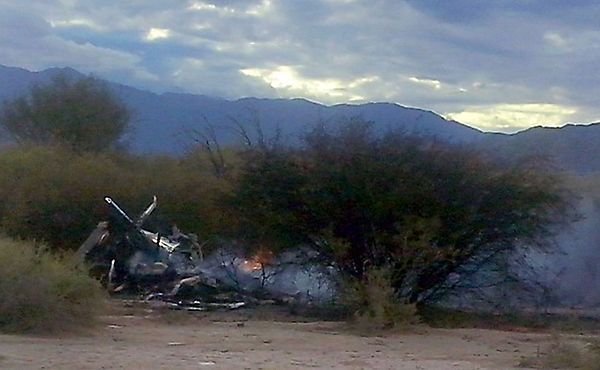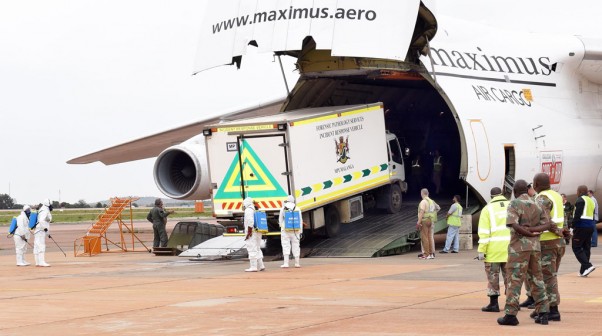
Last year over 5,000 people lost their lives while migrating. This year, the number is already over 600 – a huge increase from this time last year, when numbers were only around 100. Nearly 500 of this year’s fatalities remain unidentified, reports IOM’s Missing Migrants Project.
Indeed, across the planet, wherever migrants face danger and death, the identities of people who are found dead or are reported missing remain, in most cases, unknown. Authorities generally give little priority to collecting data on missing migrants.
To raise awareness of this growing problem, and as part of IOM’s global effort to report on migrant fatalities, IOM is today organizing an international conference in Geneva, bringing together practitioners and experts to share information and develop priorities for action.
Migrant Fatalities: Identification, Tracing and Family Support, will take place today from 2:00 PM to 5:30 PM at IOM’s Geneva HQ.
The event, which will be opened by IOM Director General William Lacy Swing, will feature experts from the International Committee of the Red Cross (ICRC), the International Commission of Missing Persons (ICMP), the University Amsterdam, the Laboratory of Anthropology and Forensic Odontology at the University of Milan, and the European Border Deaths Research Network.
“When the tsunami hit South East Asia in 2004, the whole world was mobilized to help recover and identify the victims, despite their enormous numbers,” said Dr. Frank Laczko, Director of IOM’s Migration Research Division. “Missing migrants receive much less attention.”
Even following the highly publicized sinking within sight of Italy’s Lampedusa Island in October 2013, the majority of the 366 victims remain unidentified more than a year later. Not only are recovered bodies frequently not identified, but when deaths occur at sea, often bodies are never found, noted Dr. Laczko.
Identifying the missing is not an easy task, given that many migrants travel without documentation. As a result, tens of thousands of family members endure great suffering not knowing whether a loved one is dead or alive. In a sense the families experience a “double tragedy” – not only a death in the family, but also the inability to mourn properly, not knowing where a loved one may be buried or the circumstances of his or her death.
Research has shown the devastating effects this situation has on families, affecting psychological well-being, family dynamics and social relations, the family’s economic situation, as well as processes like inheritance, remarriage, and guardianship of children. The families of the missing have a right to know the fate and whereabouts of their loved ones – a right recognized both by international humanitarian law and human rights law.
Families trying to establish what happened to missing relatives may face bureaucratic red tape, finding it difficult to access reliable information about their loved ones.
There is no established common practice for collecting information on migrant deaths between nations, or even sometimes between different jurisdictions within a single country. The technical skills needed for identification exist, but there is not yet an international framework establishing what information should be collected, and how it should be shared.
In Europe there is no centralized system for identifying the bodies of migrants, nor is there a systematic method for informing their families in origin countries. There is no shared database in individual European states or regionally that compiles all information on missing migrants.
When bodies are not recovered and no DNA sample can be taken or other identifying information obtained, the task of helping family members locate missing loved ones is even more challenging.
In Europe, a major impediment remains the lack of any mechanism to link post-mortem data from European countries where dead migrants are found with ante-mortem data from their countries of origin all over the world.
When a body is found, although a DNA sample may be taken, it must be matched with DNA from a family member in order to establish identity. Not knowing who these family members may be often makes this impossible.
When shipwrecks occurs, IOM – which works in Southern Italy under the framework of the Praesidium project alongside UNHCR, Save The Children and Italian Red Cross – assists Italian authorities in verifying whether there are missing migrants, trying, when possible, to gather information based on survivors’ testimonies.
There is also a need to better train national authorities – for instance, coast guards – to respond when bodies are retrieved. Ad hoc and uncoordinated processes of collecting, recording and preserving data taken from an unidentified body obstruct processes of identification. Partner agencies such as the ICRC and ICMP also offer scope to better assist families of the missing in origin and destination countries and to ensure dignified burial and marking of graves.
This is not solely a European problem. Since 1998, more than 6,500 people have died attempting to cross the US-Mexico border. It is estimated that a third of these have not been identified, and the families of the missing continue to search for answers.
Today’s seminar will compare approaches and experiences in the United States and Europe. From the United States, Robin Reineke, Co-founder and Executive Director of the Colibrí Center for Human Rights, based in Tucson Arizona, will discuss the organization’s work to link family members with missing loved ones along the border between Mexico and the United States.
The Center assists families in their search by collecting detailed missing persons reports and working with forensic scientists to help identify the dead recovered along the border between Mexico and the United States. An estimated 2,000 people have been reported as missing along this border since the organization began compiling data in the year 2000.
For more on IOM’s Missing Migrants Project please go to:
http://missingmigrants.iom.int/
Case study
The Colibrí Center’s Reineke reported on the case of a missing Guatemalan migrant, Felix, who last spoke to his family from Mexico in July 2009. A few days later, his wife received a call from his coyote, or professional smuggler, explaining that Felix had collapsed in the desert and was left near a road frequented by the US Border Patrol units.
In 2011, staff from Colibrí took detailed information about Felix from his wife, distraught after two years of not knowing what had happened to her husband. In cases like this, the anguish can be excruciating. Relatives of the missing don’t know where to go for help. Some families call dozens of offices, and rarely have their calls returned. Some calls that do come are from mysterious people claiming to have the person, willing to release them only after thousands of dollars have been wired to them. Other calls come from private investigators, promising to unearth hidden information—again for a price.
In Felix’s case, when records of unidentified remains found in Arizona were searched against his information, the match was relatively easy to make. A man found near Choulic, Arizona, on July 9, 2009, fit the missing migrant’s description. His widow was sent a facial photograph of the decedent, and she confirmed the identity.
Although his photo had been taken the day after Felix died, a number of factors prevented his widow from having this information until 2011. Due to fear, families usually do not report such cases to the police. Instead, these cases are reported to consulates, human rights groups, and others, many of whom have inconsistent access to data about unidentified remains. The Colibrí Center for Human Rights is working to bridge this gap, so that families like Felix’s will have answers sooner.
Tuesday 10 March 2015
http://www.iom.int/cms/render/live/en/sites/iom/home/news-and-views/press-briefing-notes/pbn-2015/pbn-listing/iom-hosts-panel-on-identifying-m.html




















